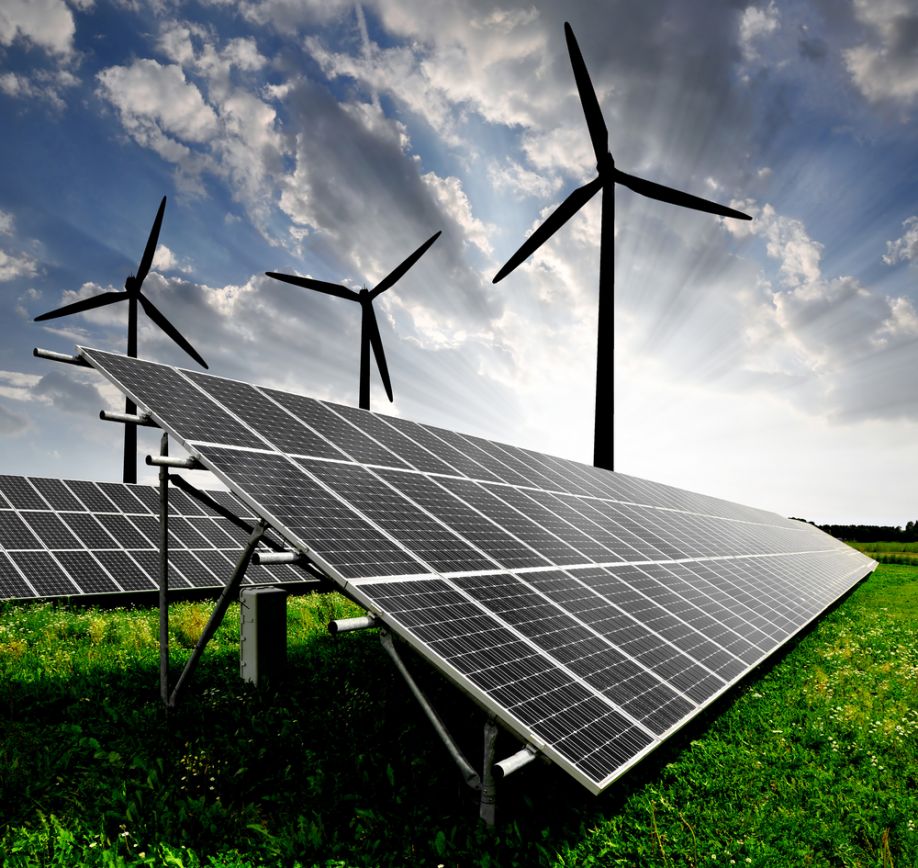Wind Industry Closes Record 2020 With Strongest Quarter Ever
|
WASHINGTON D.C. — The U.S. wind industry had its strongest year ever in 2020 as the amount of new wind power capacity added increased by 85 percent over 2019. The industry added 16,913 megawatts (MW) of wind power capacity to the grid in 2020—enough to power more than 5 million American homes. Most of this growth came in the fourth quarter, when developers commissioned 10,593 MW of capacity, smashing all quarterly records. With these additions, there are now 122,478 MW of operating wind power capacity in the United States, providing enough power for 38 million American homes.
Project owners commissioned 54 new wind projects across 20 states in the fourth quarter, including two of the nation’s largest single-phase wind projects in history in New Mexico and Texas. On the heels of this activity, another 34,757 MW of wind projects are either under construction or in advanced development. Direct utility ownership of wind power continued to grow, while corporate power purchase agreements (PPAs) lagged due to uncertainty caused by COVID-19.
These findings and the latest industry data are highlighted in the newly released ACP Market Report Fourth Quarter 2020 by the American Clean Power Association (ACP). For a media copy of the full report, please contact Sam Brock (sbrock@cleanpower.org).
“2020 was a banner year for the wind industry,” said ACP CEO Heather Zichal. “Despite all the challenges COVID-19 placed on our businesses, we still shattered nearly every record for capacity and growth. The fourth quarter was not only the strongest quarter on record, but it also saw more wind installed in just that quarter than in any full year in the modern industry’s 40 plus year history, except 2012.”
The record-breaking growth was due to a number of factors, including strong continued demand from American consumers for clean energy to power their homes, as well as technological improvements that have allowed renewable energy prices to become more and more competitive in the marketplace. Corporate demand also continues to play a part, as more companies turn to renewable energy to cut costs and help them achieve their sustainability goals. In the fourth quarter specifically, the anticipated expiration of federal tax incentives led many developers to target the end of 2020 for project completion.
Wind capacity additions were up 94 percent in the fourth quarter of 2020, compared with the same period in 2019. The strong quarter lifted wind project installations in 2020 to a total of 90 projects across 26 states, totaling 16,913 MW for the year, an increase of 85 percent over 2019.
At a state level, Texas led with 2,197 MW installed during the fourth quarter, followed by Wyoming (895 MW), Oklahoma (866 MW), Iowa (861 MW), and Missouri (786 MW). Notably, the addition of Sagamore Wind (523 MW) in the fourth quarter allowed New Mexico to claim the second largest single-phase wind project in the country. Texas’ Maverick Creek (492 MW), also placed in service this quarter, is the fourth largest single-phase wind project in U.S. history.
Projects totaling 34,757 MW were either under construction (17,302 MW) or in advanced development (17,455 MW) at the end of December. Total pipeline activity decreased by 20 percent from the previous quarter, due to the record level of commissioning in 2020. The combined construction and advanced development activity is spread across 177 projects in 26 states and 15 projects in federal waters. Federal waters host 26 percent of the total development pipeline, followed by Texas (13 percent), Wyoming (10 percent), Oklahoma (7 percent), Kansas (5 percent) and New Mexico (4 percent). There are currently 11 states with more than 1,000 MW in the near-term pipeline.
Despite continued disruptions from COVID-19, project developers announced 3,834 MW in combined new development activity in the fourth quarter of 2020, with projects totaling 3,334 MW starting construction and an additional 500 MW entering advanced development. Nonetheless, developers continue to report challenges raising tax equity for projects in development, due to economic uncertainty, tighter lending standards, and constrained tax equity supply.
Wind PPA announcements in the fourth quarter continued to be down noticeably from quarterly levels throughout 2018 and 2019, partially due to uncertainty caused by COVID-19. Project developers and power purchasers announced 700 MW of new PPAs in the fourth quarter, bringing PPA activity for the year to 5,444 MW. In a reversal from the third quarter, utility PPA activity picked up in the fourth quarter, with two utilities announcing wind power contracts totaling 450 MW. Over 16 GW of projects underway have a PPA in place, representing half of the current pipeline.
Solar and Energy Storage
American utility-scale solar and energy storage also set annual capacity addition records in 2020. According to the Energy Information Administration (EIA), utility-scale solar additions more than doubled from 2019, as the industry installed 11,158 MW in 2020, marking a 37 percent improvement on the previous record set in 2016. With those additions, there are now 47,317 MW of operating utility solar power capacity in the country, enough to power 11 million American homes. Nearly 30 percent of installed utility solar power is in California, followed by Texas (11 percent), North Carolina (11 percent), Florida (8 percent), and Nevada (5 percent).
Battery energy storage capacity set its own record last year, with utility-scale storage increasing over 300 percent from 2019. With the 734 MW installed in 2020, there are now 1,756 MW of operating utility battery energy storage capacity in the U.S.
ACP’s future quarterly reports will include the association’s own data on utility-scale solar and energy storage, along with wind.
“The American clean power industry looks forward to continuing to set records as we move towards a majority renewables U.S. electric system by the end of this decade,” Zichal said. “Wind, solar, energy storage, and transmission are today a part of the local economies in every U.S. state, powering the equivalent of over 49 million American homes. The tireless efforts of the hundreds of thousands of Americans working in clean energy, along with targeted policy support, allowed clean power to make great progress in 2020 as we worked against the challenges of COVID-19. The industry remains well-positioned to help our nation address the interlinked challenges of economic recovery and combating climate change as the U.S. energy transition continues to bring more clean, affordable electricity to American communities.”
Editor’s Note: Media Briefing
John Hensley, ACP’s Vice President of Research and Analytics, will be hosting a media briefing on the findings of the Fourth Quarter report on Thursday February 4 from 12:00-1:00 ET. This briefing will include Q&A. To register for the briefing and receive call-in details, please contact Sam Brock (sbrock@cleanpower.org).
###
About ACP: American Clean Power is the voice of companies from across the clean power sector that are powering America’s future, providing cost-effective solutions to the climate crisis while creating jobs, spurring massive investment in the U.S. economy and driving high-tech innovation across the nation. We are uniting the power of America’s renewable energy industry to advance our shared goals and to transform the U.S. power grid to a low-cost, reliable, and renewable power system. Learn more about the benefits clean power brings to America at www.cleanpower.org and follow us on Twitter @USCleanPower and LinkedIn. |
Comments (0)
This post does not have any comments. Be the first to leave a comment below.
Featured Product


